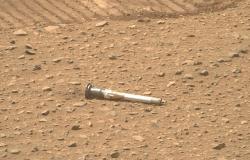The reversal of the Northern Gas Pipeline, the work that allows gas from Vaca Muerta to be transported to the north of the country, registered important progress: the regular line welding of sections 2 and 3 was completed.
This is the first 100 kilometers of the Federal Integration Gas Pipeline – out of a total of 122 kilometers – that extends from Tío Pujio to La Carlota, linking the Central-West and North Gas Pipelines.
To reduce the execution times of the work, an automatic welding system was used, a modern technology that not only allows a greater number of weldings to be carried out per day, but at the same time minimizes errors and gives predictability to the production rate.
The last welding on the regular line was carried out in recent days at kilometer 100 of the Tío Pujio – La Carlota Gasduct, near the town of Arroyo Cabral, near Villa María, on route 158. A total of 4,059 welds in 41 days, setting records with up to 151 welds per day, which is equivalent to 3 kilometers of progress per day.
The works on these sections continue with work on crossings, splicing, lining, ditching, lowering and covering, as well as ultrasound testing, to then begin the hydraulic tests.
In addition, the work is progressing with the construction of the remaining 22 kilometers of the gas pipeline, 62 kilometers of loops (expansion) to the Northern Gas Pipeline near Ferreyra and the City of Córdoba and the change of direction of 4 compressor plants, with a date of Completion of the works scheduled for the end of August. At the moment, more than 2 thousand people are working directly on the project.
It should be noted that the Reversion of the Northern Gas Pipeline will allow gas from Vaca Muerta to be brought to the provinces of Córdoba, Tucumán, La Rioja, Catamarca, Santiago del Estero, Salta and Jujuy for the generation of electrical energy, supply of homes, industries and the development of scale of new activities such as lithium mining, in addition to exporting gas to countries in the region.
The concern and plight of the provinces of northern Argentina and of Córdoba in particular is given by the experience lived in May, when there were cuts to industries and service stations due to a lack of gas, which is the consequence of the decline of the Bolivian basin that Before, it supplied that entire region. That is why the idea is to use that same pipe but with gas circulation in the opposite direction.
Key to the economy of the province and northern Argentina
The work to bring gas from Vaca Muerta to the Argentine North and thus stop depending on the declining imports from Bolivia, includes not only pipes and gas pipelines but the reversal of compressor plants.
The compressor plants whose direction will be changed – that is, the direction of the gas flow will be reversed – are those of Ferreyra and Deán Funes (in Córdoba), Lavalle in Santiago del Estero and Lumbreras in Salta, located on the trace of the Northern Gas Pipeline operated by TGN.
Today, the Néstor Kirchner Gasduct transports 11 million cubic meters per day, but the objective is to reach 40 million cubic meters, for which an investment of US$ 800 million will be required in Córdoba alone.
The Reversion of the Northern Gasduct is complemented by the construction of the 122 km Federal Integration Gas Pipeline between Tío Pujio and La Carlota, as well as a loop – running parallel – to the 62 kilometer Northern Gas Pipeline currently in progress.






